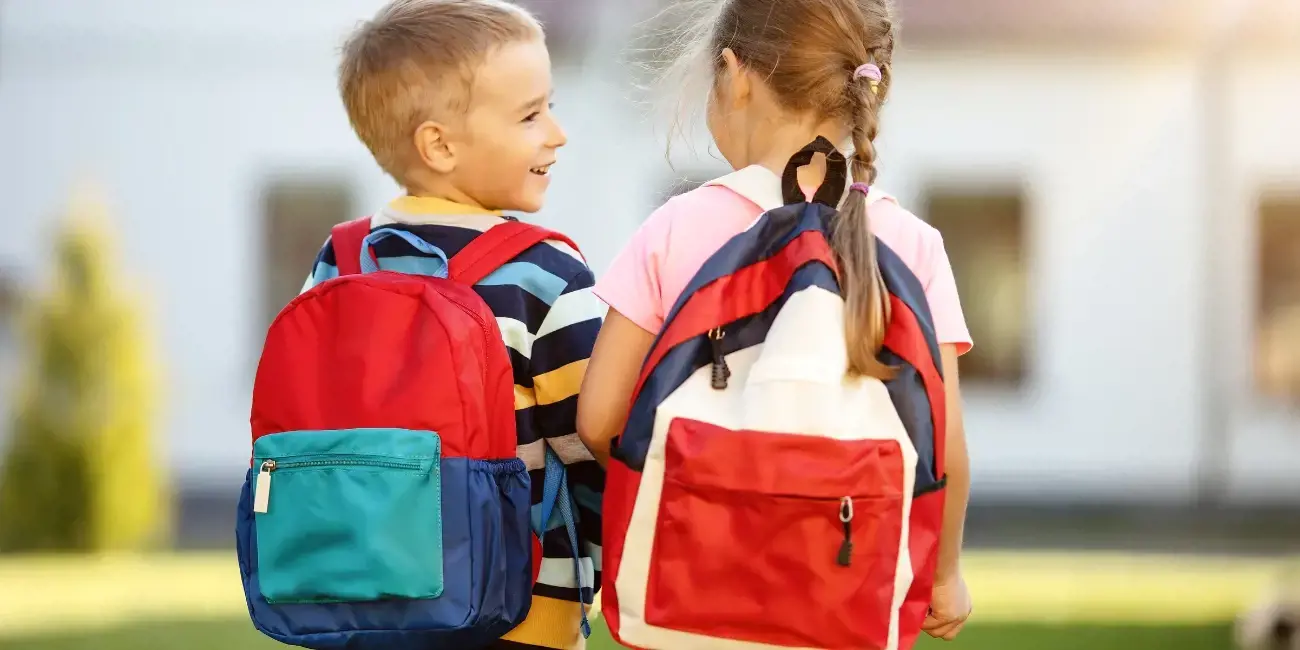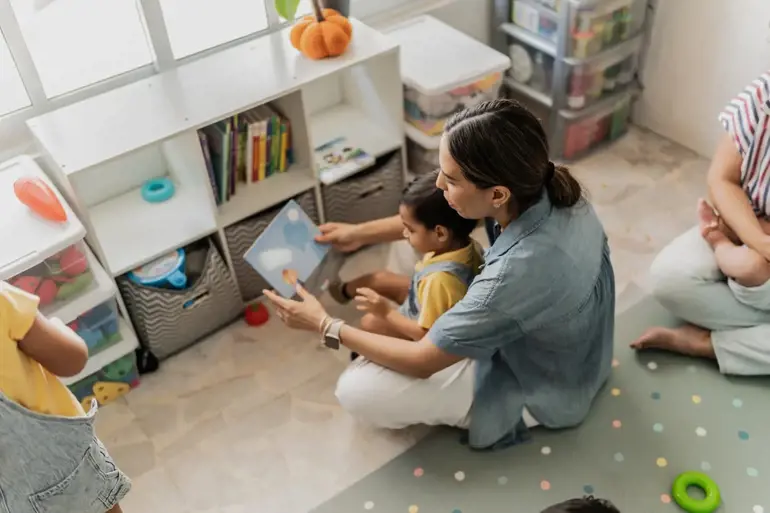Starting childcare can be an emotional experience for both parents and children. Entrusting their child's care to someone else can be challenging, as they may worry about their child's well-being and whether they will adapt to the new environment. It's common for parents to feel a mix of excitement and sadness as they navigate the childcare journey.
Depending on their age, children may experience a range of emotions as they start childcare. They might feel anxious or confused initially, as the unfamiliar setting and separation from their parents can be overwhelming.
Nevertheless, with time, patience, and support from educators, children often adapt and develop a sense of routine and security. They can form new friendships, learn social skills, and experience positive interactions, leading to a sense of belonging and growth.
Ultimately, the transition to childcare can be a transformative experience for both parents and children, developing independence, resilience, and valuable opportunities for future growth.
With that being said, we're excited to guide you through your childcare journey, starting here, with the Childcare Essentials Checklist for the daycare items your child will need.
Getting organised
Being organised and prepared when starting childcare is extremely important.
First and foremost, it ensures the safety and well-being of your child. By having all the necessary items ready, such as nappies, extra clothes, and feeding supplies, parents can rest assured that their child's basic needs will be met throughout the day.
General items across all ages
Change of clothing
Accidents happen, and having extra outfits on hand will ensure that your child can be changed into fresh clothes if they experience nappy leaks, spit-up, or any other messy moments throughout their day. We know childcare can be messy but that's all part of the fun!
Nappies or training pants
Have a supply of nappies at the ready in case your childcare provider does not supply them. Having an ample supply means your child can be changed regularly which helps prevent discomfort, rashes, and infections. If your child is learning, it's a good idea to have a supply of your or your child's preferred training pant.
Sun hat and glasses
Protecting your child's delicate skin from the sun is critical. This sun protection will shield the child's head, face and eyes from harmful UV rays, reducing the risk of sunburn.
Sunscreen
Applying sunscreen with a high sun protection factor (SPF) helps prevent sunburn and reduces the risk of long-term skin damage caused by exposure to the sun. Some children with sensitive skin can have reactions to certain creams or lotions so it's important that you relay that information to your childcare provider and supply your preferred cream.
Comfort item
Anything that the baby or child is attached to provides familiarity and comfort, especially during times of transition or when the child is feeling anxious or upset. These transitional objects like stuffed animals or special blankets provide emotional support and a sense of security, especially for that all-important nap.
Baby, 6 weeks – 12-months-old
Nursing supplies
If you're still breastfeeding your child, you will need to invest in a breast pump, breast milk storage containers, and bottles for expressed milk. All of this will come in very helpful to ensure your baby receives breast milk when you're not present.
Nursing cover or shawl
If you are fortunate enough to have the service close to work and you're able to pop in to feed your child, you might want to grab a shawl for privacy while breastfeeding.
Formula
If your baby is formula feeding, make sure you supply the formula they're used to drinking and check if your service provides bottles and teats. Again, these can be very specific for babies with reflux or other conditions so it's important to give your service all the information required to make sure your baby is fed as you would at home.
Baby blanket
A baby blanket provides comfort, warmth, and a familiar scent to help the baby feel secure during naps or when away from home.
Pacifier (optional)
Pacifiers, or dummies can help soothe babies by satisfying their natural sucking reflex. Some babies find comfort in using a dummy during periods of separation from their parents or sleep times.
Sleep suit
If your baby is used to sleeping in a suit or swaddle, don't forget to pack it or have a second one on hand for your educators to use. Without it, your baby might not get the sleep they need!
Toddlers, 12 months – three years
Sippy cups
Transitioning from bottles to sippy cups promotes independent drinking skills and reduces the risk of tooth decay associated with prolonged bottle use. Make sure you pack the right colour!
Snacks box
Packing the snack box can be hard but without the right one, opening it can be harder. Having a suitable snack box ensures that toddlers and preschoolers have nutritious snack options readily available and accessible to support their growth and energy needs throughout the day.
Backpack
The right backpack allows pre-schoolers to carry their own belongings, including books, art supplies, packed lunches, and water, promoting a sense of responsibility and independence.
Water bottle
Like the snack and lunch box, a water bottle can be a challenge to open if you don't have the right one. Make sure you have your toddler with you when you buy it to test that out!
Seasonally appropriate clothing: Having the right clothing for different weather conditions ensures that children are comfortable and protected, whether it's warm or cold outside. Make sure to have a change of clothes for accidents, messy incidents, or just super sensory fun!
Preschoolers, 3+
Naptime essentials
If the pre-schooler takes naps during childcare hours, include a small blanket or nap mat, a pillow, and a soft cuddly toy to help them settle down and feel comfortable during rest time.
Indoor shoes or slippers
Some childcare services require children to change into indoor shoes or slippers to maintain cleanliness and prevent outdoor dirt from being tracked inside. Check with the specific childcare facility for their footwear policy.
Weather-specific gear
Depending on the climate and seasonal changes, consider including additional items such as a raincoat, umbrella, rain boots, or snow boots, to ensure the child is prepared for outdoor activities in different weather conditions.
Reusable water bottle
Encourage proper hydration by providing a labelled, leak-proof water bottle that the preschooler can use throughout the day.
Communication is everything
Remember to check with your childcare service regarding any specific requirements or restrictions they may have and tailor the list accordingly to meet your child's individual needs. Some services supply some of the items listed above while others prefer parents to supply so it's important to be aligned.


































